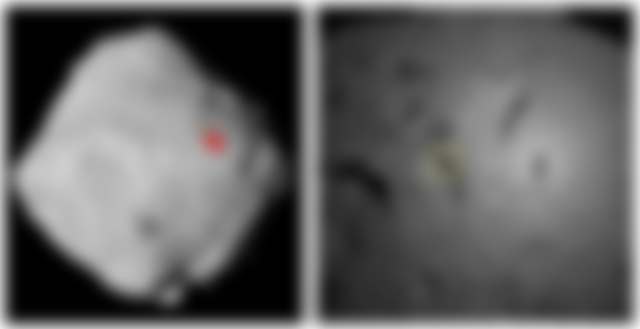The asteroid Ryugu may have started as a comet

It turned out that this can really explain the observed properties of the asteroid, and then the parent body of Ryugu in the distant past was a comet that exhausted its volatile reserves in ten thousand years.
The research of the asteroid Ryugu was carried out by the Hayabusa-2 mission.
The probe also received and delivered to Earth two samples of its soil and landed three descent modules on the asteroid.
The properties of Ryugu determined by ship led to the widely accepted hypothesis that could be formed due to a powerful collision of two large asteroids and the subsequent slow process of accumulation of fragments under the influence of gravity into a single body.
However, the reaccumulation scenario cannot fully explain the abundance of organic matter.
An alternative scenario for the formation of Ryugu is that we have a degenerate comet that has exhausted its volatile reserves.
The sublimation of ice generates a strong spin-up of the comet's nucleus, due to which organic substances formed in the interstellar medium could be included in the ice composition of the comet's nucleus during its formation.
A group of planetary scientists led by Hitoshi Miura of Nagoya University set out to test the Ryugu comet origin scenario through numerical simulations.
The scientists looked at the comet's homogeneous, spherically symmetrical, highly porous nucleus, composed of micron-sized water ice particles and centimeter-sized stone fragments.
As water ice sublimates from the outer layer of the nucleus, the remaining rock debris accumulates on its surface to form a dusty mantle, and the comet's nucleus contracts.
Scientists presented their scenario of the origin and evolution of Ryugu.
The cometary nucleus, which was the parent body of the asteroid, formed outside the orbit of Jupiter and contained water ice and silicate dust in its composition.
Subsequently, it fell into the main asteroid belt due to interaction with the terrestrial planets, after which it moved to the inner asteroid belt due to the drift caused by the Yarkovsky effect.
Due to heating from the Sun, the comet's nucleus turned into a "heap of rubble" and was active during the first 10 thousand years of its existence.
Later, Ryugu, already an asteroid, fell into its current orbit due to the secular resonance ν6.
This scenario is consistent with the dynamic evolution of modern comets in the solar system.
In addition, it is possible that this theory is applicable to the asteroid Bennu, which is also a "rubble pile" and looks like a top.
It is expected that a comprehensive analysis of the collected Ryugu and Bennu samples in laboratories will prove or disprove the connection between porous asteroids and comets.
